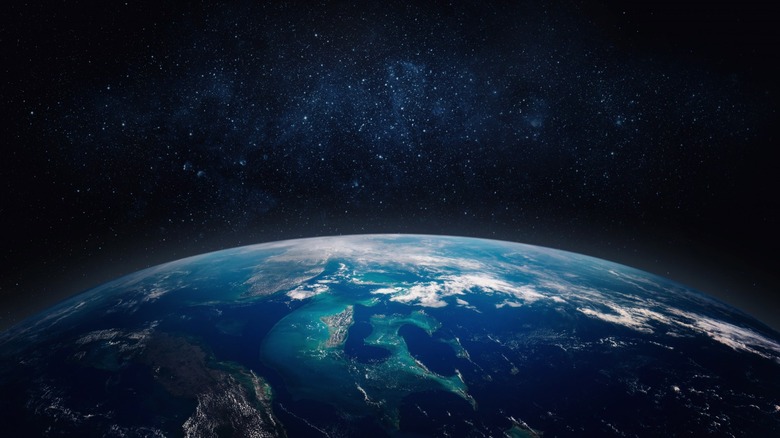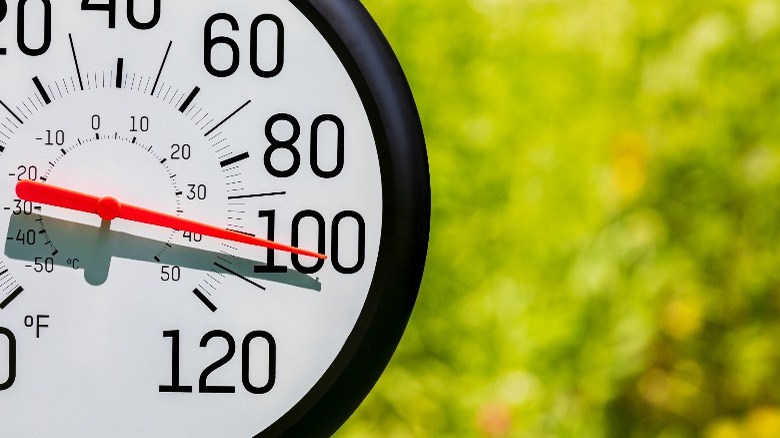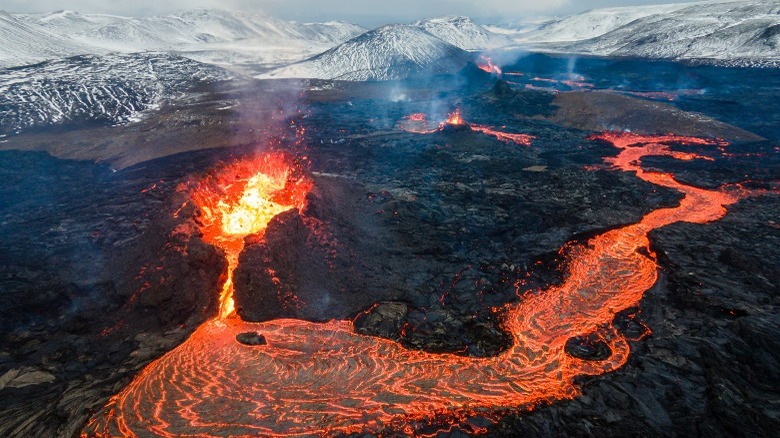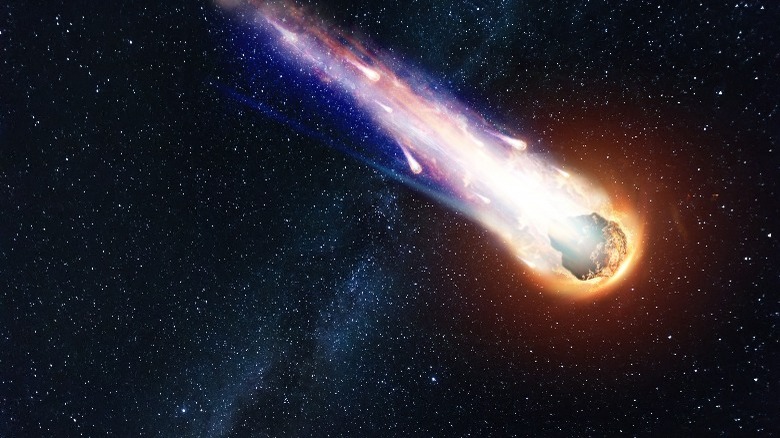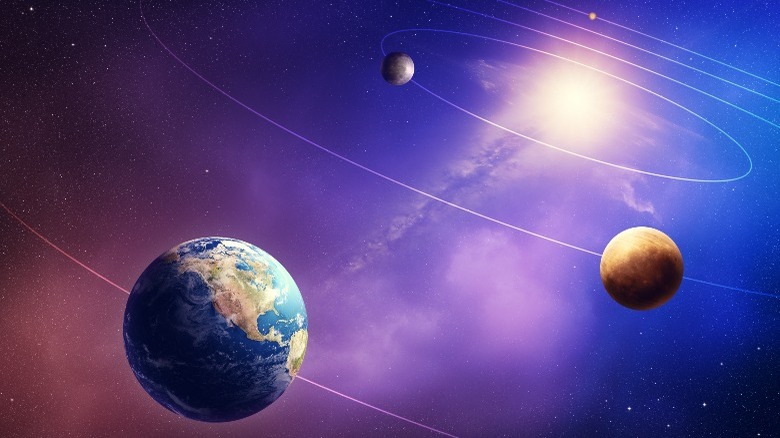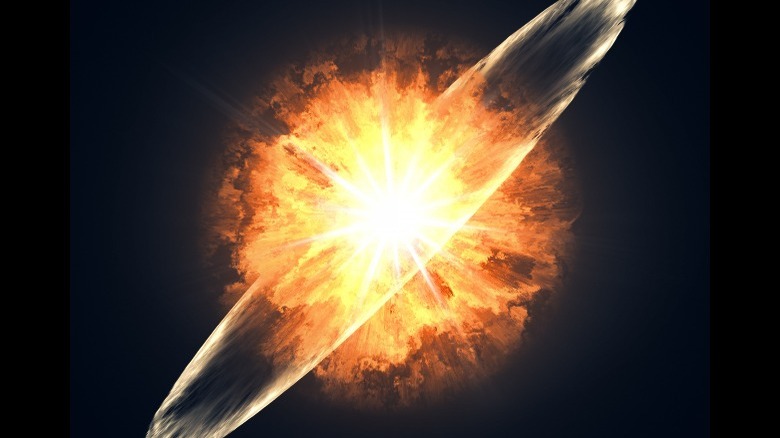Can Planets Die?
While many of us are worried about human-influenced climate change and its effects on Earth's habitability, other planets are being similarly affected by forces beyond their surface. The behavior of nearby stars and other celestial bodies like asteroids and comets can change life — or the potential for it — on a given planet.
A planet can "die" if it becomes uninhabitable, losing the possibility of sustaining life — whether it had any or not. A planet can also "die" by being totally destroyed and reduced to space debris. Planets can suffer either fate in several different ways. Many of these processes won't occur until millions of years after the planet's creation, and most won't happen overnight. However, Space.com explains that most planets will eventually "die." Sean Raymond, a scientist in France, says that it's happening all the time, not so far from Earth. Astronomers consistently monitor other worlds to discover their fates and predict what could eventually happen here.
Extreme temperatures
A planet's temperature is key to its ability to sustain life. Extremes in either direction (hot or cold) can kill living organisms. On Earth, temperatures depend on how much carbon dioxide is in the atmosphere (via Space.com). Too much of it — or of other greenhouse gases — and radiation from the sun is trapped in the Earth's atmosphere and not rereleased, thus raising the planet's temperature.
Warmer temperatures can increase the chances of rain, which removes some of the gases from the air and cools the planet. However, when the gases build up too quickly, rain isn't enough to wash them out. High levels of greenhouse gases not only raise temperatures but can cause Earth's atmosphere to rise out into space, removing our protection from radiation. This is similar to what caused the hole in the ozone layer, according to the Union of Concerned Scientists.
The opposite effect could happen on a planet with too much ice on its surface, as the ice reflects heat from the planet's star back into space. The planet would eventually be too cold for living things. Space.com notes that a climate catastrophe like this can happen on any planet capable of sustaining life.
Volcanic activity and gas giants
A planet's volcanic and tectonic activity can greatly affect its environment and atmosphere. Volcanic eruptions emit lots of carbon dioxide and other gases, and as these escape into the atmosphere, the planet warms. According to Space.com, too many volcanic eruptions could turn Earth into a planet like Venus.
On the other hand, volcanic eruptions can also cool a planet's temperatures. The 1815 eruption of Mount Tambora in modern Indonesia put around 31 cubic miles of ash into the air (via National Oceanic and Atmospheric Administration). This ash slowly spread throughout the Northern Hemisphere. Average temperatures therefore dropped an entire degree over the following year, called "The Year Without a Summer." This led to other natural disasters as well as food shortages. A series of similar events could drastically change a planet.
Volcanic activity can be controlled by a larger, nearby planet's gravitational force. That force could warm and pressurize a planet or moon's inner layers. Jupiter's moon, Io, is the most volcanically active place in our solar system because of Jupiter's gravity. Gas giants like Jupiter can also affect the orbit of neighboring space bodies or even push them out of orbit entirely. In an extreme case, a gas giant could propel another body into a star (via Space.com).
Asteroid bombardment
Aside from planets and moons, gas giants can also move comets and asteroids. The trajectories of these comets and asteroids can also be changed by other gravitational forces or by ice. Around 3.8 to 4.1 billion years ago, during a period called the Late Heavy Bombardment, planets in our solar system experienced frequent impact from other large space bodies (per NASA). It was late in the solar system's formation and influenced the current size of the planets. Specifically, during this time, the gravity of Neptune and Jupiter forced comets toward Earth (via Space.com). When bodies like these hit a planet, they can cause a mini ice age — if they're large enough.
We know that the extinction of the dinosaurs and other species around 65.5 million years ago was probably caused by such an event (via History). Iridium in the Earth's geological record corresponds to the era in which this happened. Because this element normally only exists in space, scientists Walter and Luis Alvarez proposed that a comet, asteroid, or meteor strike caused the extinction event. The same era saw global temperatures decrease, causing the oceans to cool and ice caps to form at Earth's poles. Too many events like this could make a planet completely uninhabitable, according to Space.com.
Consumption by a white dwarf
Stars that eventually become white dwarfs have a previous "red giant" phase during which the star loses its outer layers. Because of the change in the star's gravitational pull, small orbiting bodies are pulled closer to the star (via NASA). Later, the star becomes a white dwarf, a "dead" star that no longer produces energy through nuclear fusion. These stars are still hot but will slowly cool and become more difficult to see (via NASA). They also become more compact, no larger than Earth.
According to NASA, tidal forces from a white dwarf can cause closely-orbiting bodies to disintegrate. The remains then fall to the star's surface. Astronomers estimate that this could happen to Earth — and will definitely happen to Mercury and Venus — between 5 and 8 billion years from now, when our sun becomes a white dwarf (via NASA and the Monthly Notices of the Royal Astronomical Society).
In the summer of 2022, NASA discovered a white dwarf called G238-44 that seemed to be "eating" its former orbiting planets. Astronomers can tell it's consuming both rocky-metallic and icy material, two key ingredients for a potentially life-sustaining planet.
Water loss and supernovas
NASA explains that almost every star in the universe will eventually become a red giant, then a white dwarf. However, low-mass stars will change more slowly. Stars with a very large mass may expand into supergiants instead of shrinking and later explode in a supernova. This type of star is rare, and no planets have been found orbiting the ones astronomers know about, but there may be some they have yet to discover. A planet orbiting a supergiant would be destroyed by the star's supernova.
Another type of star, a red dwarf, could sustain life on its orbiting planets for a few million years, but as the star grows brighter, the planets' water would evaporate. If enough water remained, the planets would still be inhabitable; otherwise, they wouldn't. A planet like Earth that has water in its interior could eventually push that water outward to create new oceans. However, astronomers estimate that Earth will no longer have water in a billion years (via Space.com). This will probably "kill" planets near our sun before its expansion does. The good news for us is that it won't happen for a long, long time.
